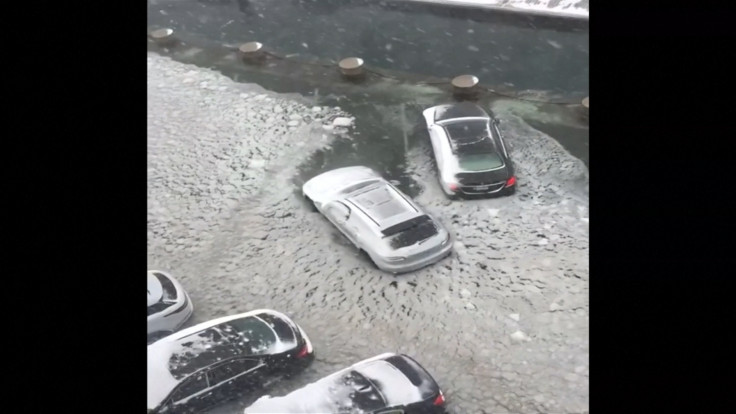Bomb Cyclone: Nasa shares stunning images of frozen Chesapeake and Delaware Bay
Images shot from Nasa's Terra satellite show parts of the East Coast frozen solid.

The "Bomb Cyclone" that swept over the American East Coast this winter has been one of the more severe nor'easters that has left one side of the country clattering its teeth. This New Year's day was the coldest in over half a century.
Images showing a frozen Niagara Falls, stories of sharks stuck in ice blocks, cars in Texas spinning on black ice and dogs freezing solid are making the rounds in what is looking to be the first environmental event of this year.
Nasa has shared a few images on its Instagram account that offers a bird's eye view of what is happening in some parts of the country.
In the post, Nasa explains how a powerful nor'easter dumped snow over thousands of miles in the east coast region, and how bitterly cold winds swept across the coast a few days later. This has caused several water bodies to freeze over, notes the space agency. Rivers, estuaries, and bays that do not normally receive too much ice were found to be frozen solid.
The first image in the gallery shows the Delaware Bay and the ice in it. This body of water covers the region between New Jersey, Pennsylvania and Delaware, notes Nasa. On the left side of the image, one can see the Chesapeake Bay between Maryland and Delaware.
The second image shows the Albemarle Sound in North Carolina frozen solid. Besides, large swathes of white, snow-covered patches are littered across the entire region and visible from space.
The third image speaks of a similar scene, this time in Rhode Island and south-eastern Massachusetts where there is a fair amount of ice in the Buzzards Bay and Nantucket Sound. The third image also points out Providence, which is under a white sheet.
The images were captured through Nasa's Terra satellite, which explores the Earth's atmosphere and studies the land, snow, ice, and energy balance. It is primarily a climate satellite and measures the impact of human activity on climate change.
It might come as a surprise to many, including several world leaders, but extreme cold weather like the bomb cyclone phenomenon are also signs of climate change and global warming. Climate and weather are two different concepts, notes Nasa. Weather is the short term atmospheric condition, but climate refers to the overarching, long term trends. The planet is definitely warming up, and that too at an alarming rate, scientists have found.
Last year, there were several distressing environmental news events, and it is only getting worse, say scientists.





















